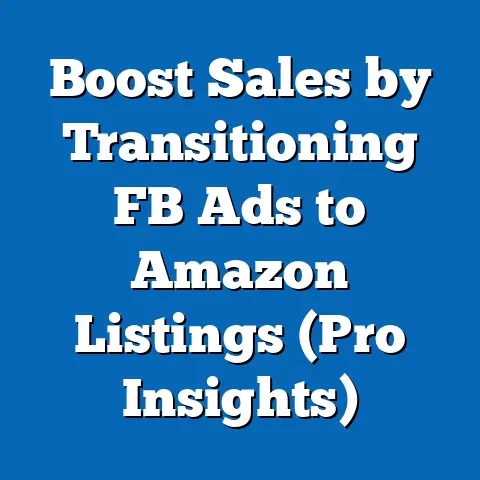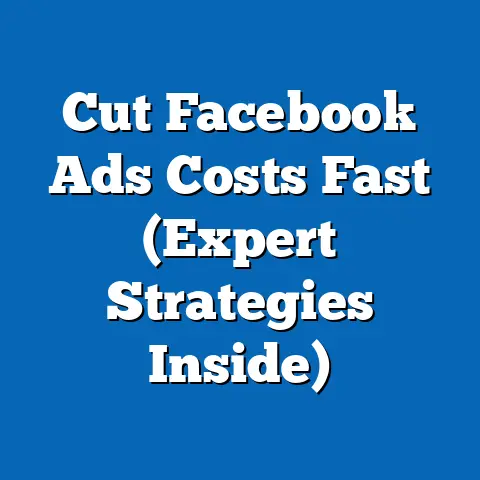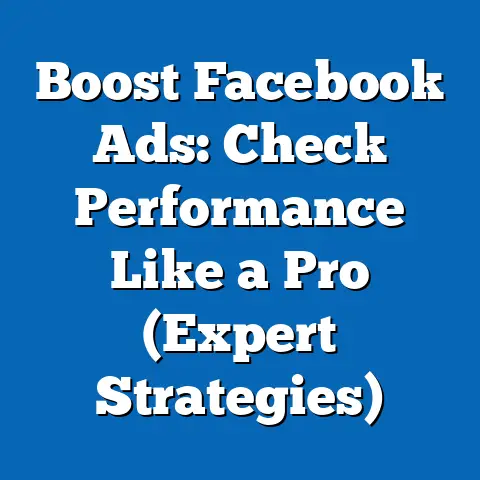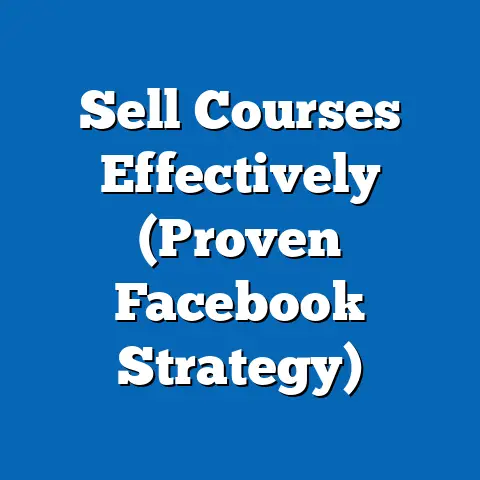Optimize Chiropractor Facebook Ads (Targeting Secrets)
In today’s digital age, the healthcare landscape is rapidly evolving, and chiropractors are increasingly turning to online marketing strategies to connect with potential patients. One of the most powerful tools at their disposal is Facebook advertising. I’ve seen firsthand how a well-executed Facebook ad campaign can transform a struggling practice into a thriving one. Think about it: Facebook boasts billions of active users, and a significant portion of them are actively seeking health and wellness solutions.
The rise of digital marketing in healthcare is undeniable. Statistics show a significant increase in online advertising spend within the sector, reflecting the growing recognition of its effectiveness. For example, a recent study highlighted that social media engagement for health-related content has surged by over 40% in the past year. This isn’t just a trend; it’s a fundamental shift in how people seek and access healthcare services.
But simply running ads isn’t enough. To truly maximize the return on investment (ROI), chiropractors need to master the art of targeting. This means understanding who their ideal patients are and leveraging Facebook’s sophisticated targeting features to reach them effectively.
Understanding the Facebook Ads Platform
Before diving into the targeting specifics, it’s essential to grasp the fundamentals of the Facebook Ads platform. I remember when I first started experimenting with Facebook Ads; the sheer number of options was overwhelming. But with a bit of patience and persistence, I quickly learned the ropes.
At its core, Facebook Ads is a powerful advertising ecosystem that allows businesses to reach a massive audience with highly targeted messages. It operates on a pay-per-click (PPC) or cost-per-impression (CPM) model, meaning you only pay when someone clicks on your ad or when your ad is displayed a certain number of times.
The platform offers a wide range of ad formats, including:
- Image Ads: Simple and effective for showcasing your services or special offers.
- Video Ads: Engaging and ideal for telling your story or demonstrating the benefits of chiropractic care.
- Carousel Ads: Allow you to display multiple images or videos in a single ad, perfect for showcasing different services or patient testimonials.
- Collection Ads: Designed for e-commerce, but can be adapted to highlight a range of services with a visually appealing layout.
- Lead Generation Ads: Capture leads directly within Facebook without sending users to a landing page.
These ads can be placed in various locations, including:
- Facebook Feed: The primary location for most ads, appearing directly in users’ news feeds.
- Instagram Feed: Reach a younger audience with visually appealing content.
- Facebook Marketplace: Target users who are actively looking for local services.
- Facebook Right Column: A less prominent placement, but still effective for certain campaigns.
- Instagram Stories: A highly engaging format for short, attention-grabbing content.
- Audience Network: Extend your reach beyond Facebook and Instagram to a network of partner websites and apps.
The heart of the Facebook Ads platform lies in its sophisticated targeting capabilities. This is where you define who sees your ads, based on factors like demographics, interests, behaviors, and connections. This precision targeting is what sets Facebook Ads apart from traditional advertising methods.
Importance of Targeting
For chiropractors, effective targeting is not just important; it’s crucial. I’ve seen countless campaigns fail simply because they weren’t targeted correctly. Imagine spending your hard-earned money showing ads to people who have no interest in chiropractic care – it’s like shouting into the void!
Here’s why targeting is so vital for chiropractors:
- Higher Engagement Rates: When you show ads to people who are genuinely interested in your services, they’re more likely to click, like, comment, and share.
- Better Return on Investment (ROI): By targeting the right audience, you’ll get more leads and conversions for your advertising spend.
- Reduced Ad Waste: Effective targeting minimizes the number of irrelevant impressions, ensuring that your budget is used efficiently.
- Improved Brand Awareness: Reaching the right people with your message helps build brand awareness and establish your practice as a trusted resource.
- Increased Patient Acquisition: Ultimately, the goal of Facebook advertising is to attract new patients. Targeted ads are far more likely to achieve this than generic, untargeted campaigns.
To illustrate this point, let’s consider a scenario. A chiropractor in a suburban area decides to run a Facebook ad campaign promoting their services. They have two options:
- Untargeted Campaign: Shows ads to everyone within a 20-mile radius, regardless of their interests or demographics.
- Targeted Campaign: Shows ads to people within a 20-mile radius who are interested in health and wellness, back pain relief, and related topics, and who are within a specific age range (e.g., 30-65).
Which campaign do you think will be more successful? The targeted campaign, without a doubt. By focusing on the right audience, the chiropractor will see higher engagement rates, lower ad costs, and ultimately, more new patients.
Key Takeaway: Before you even think about creating your first Facebook ad, take the time to understand the platform and the importance of targeting. This foundational knowledge will set you up for success.
Identifying Your Ideal Patient
The cornerstone of effective Facebook advertising is understanding your ideal patient. I always tell my clients, “You can’t hit a target you can’t see.” Defining your ideal patient is like creating a detailed roadmap that guides your targeting efforts.
This involves a deep dive into both demographic and psychographic factors. Let’s break it down:
Demographic Targeting
Demographics are the basic characteristics of your target audience, such as:
- Age: Are you targeting young athletes, middle-aged professionals, or seniors?
- Gender: Are your services more appealing to men, women, or both?
- Location: Where do your ideal patients live? Are they concentrated in specific neighborhoods or zip codes?
- Income Levels: Can your ideal patients afford your services?
- Education: Does their education level influence their health choices?
- Occupation: Are there specific occupations that are more prone to back pain or other conditions you treat?
For example, if you specialize in treating sports injuries, your ideal patient might be a young, athletic male aged 18-35, living in a suburban area with a moderate to high income. On the other hand, if you focus on geriatric care, your ideal patient might be a senior citizen aged 65+, living in a retirement community with a fixed income.
Psychographic Targeting
Psychographics delve deeper into the psychological aspects of your target audience, such as:
- Interests: What are they passionate about? Health, fitness, sports, nutrition, etc.
- Lifestyle Choices: Are they active, sedentary, health-conscious, etc.?
- Values: What do they prioritize? Family, health, career, etc.
- Attitudes: How do they feel about chiropractic care? Skeptical, open-minded, enthusiastic, etc.
- Health Concerns: What specific health issues are they facing? Back pain, neck pain, headaches, etc.
For instance, your ideal patient might be someone who is interested in organic food, regularly attends yoga classes, values natural health solutions, and is concerned about chronic pain.
Creating Patient Personas
The best way to combine demographic and psychographic data is to create detailed patient personas. I like to think of personas as fictional representations of your ideal patients, based on research and data.
Each persona should have:
- A Name: Give your persona a name to make them feel more real.
- A Photo: Find a stock photo that represents your persona.
- Demographic Information: Age, gender, location, income, education, occupation.
- Psychographic Information: Interests, lifestyle choices, values, attitudes, health concerns.
- Goals: What are they trying to achieve with chiropractic care?
- Pain Points: What are their biggest challenges and frustrations?
- Motivations: What drives them to seek chiropractic care?
Here’s an example of a patient persona for a chiropractor specializing in sports injuries:
- Name: Alex Johnson
- Photo: A young man in athletic gear
- Demographics: Male, 25 years old, lives in a suburban area, income $60,000, college graduate, works as a personal trainer.
- Psychographics: Interested in CrossFit, weightlifting, healthy eating, values physical fitness, open-minded about alternative medicine, concerned about preventing injuries.
- Goals: To improve athletic performance, recover quickly from workouts, prevent injuries.
- Pain Points: Experiences muscle soreness and stiffness, worries about long-term joint health, wants to avoid taking medication.
- Motivations: To stay active and healthy, achieve fitness goals, feel confident in his body.
By creating detailed patient personas, you’ll gain a much deeper understanding of your target audience. This will allow you to craft more effective ad copy, choose more relevant visuals, and target your ads with greater precision.
Key Takeaway: Spend the time to thoroughly research and define your ideal patient. Create detailed patient personas that combine demographic and psychographic data. This will be the foundation of your successful Facebook advertising strategy.
Leveraging Facebook’s Targeting Features
Now that you have a clear understanding of your ideal patient, it’s time to leverage Facebook’s powerful targeting features. I’ve spent countless hours experimenting with different targeting options, and I’ve learned that the key is to be strategic and data-driven.
Facebook offers three main types of audiences:
- Core Audiences: Target people based on demographics, interests, and behaviors.
- Custom Audiences: Target people who have already interacted with your business.
- Lookalike Audiences: Find new people who are similar to your existing customers.
Let’s explore each of these in more detail:
Core Audiences
Core Audiences are the foundation of Facebook targeting. They allow you to reach people based on a wide range of factors, including:
- Location: Target people living in specific cities, states, or zip codes. You can even target people who are “living in” or “recently in” a particular location.
- Age: Target people within a specific age range.
- Gender: Target men, women, or both.
- Demographics: Target people based on education, relationship status, job title, and more.
- Interests: Target people based on their interests, hobbies, and passions.
- Behaviors: Target people based on their online behavior, such as purchase history, device usage, and travel habits.
When setting up a Core Audience, it’s important to be specific but not too narrow. I’ve found that a good starting point is to target people within a 10-20 mile radius of your practice, within a specific age range (e.g., 30-65), and who are interested in health and wellness, back pain relief, and related topics.
Custom Audiences
Custom Audiences allow you to target people who have already interacted with your business. This is a powerful way to re-engage existing patients and reach people who are familiar with your brand.
You can create Custom Audiences from:
- Customer Lists: Upload a list of your existing patients’ email addresses or phone numbers.
- Website Traffic: Target people who have visited your website.
- App Activity: Target people who have used your mobile app.
- Engagement: Target people who have interacted with your Facebook page or ads.
For example, you can create a Custom Audience of people who have visited your website in the past 30 days and show them a special offer for a new patient consultation. Or, you can create a Custom Audience of people who have liked your Facebook page and invite them to attend a free workshop.
To use customer lists effectively, ensure you comply with privacy regulations and have obtained proper consent to use their information for advertising purposes. Facebook also requires that the data you upload matches the information users have provided on their profiles for accurate matching.
Lookalike Audiences
Lookalike Audiences are one of the most powerful targeting features on Facebook. They allow you to find new potential patients who share similar characteristics with your existing customers.
To create a Lookalike Audience, you need to start with a “source audience.” This can be a Custom Audience (e.g., your customer list, website visitors) or a Facebook page audience (e.g., people who have liked your page).
Facebook will then analyze the characteristics of your source audience and find new people who are similar to them. You can choose the size of your Lookalike Audience, ranging from 1% to 10% of the total population in your target country. A smaller percentage will be more closely matched to your source audience, while a larger percentage will have a broader reach.
I typically recommend starting with a 1-3% Lookalike Audience, as this will give you the best chance of finding highly qualified leads.
Key Takeaway: Experiment with all three types of Facebook audiences – Core, Custom, and Lookalike – to find the targeting options that work best for your practice. Don’t be afraid to test different combinations and refine your targeting over time.
Advanced Targeting Techniques
Once you’ve mastered the basics of Facebook targeting, it’s time to explore some advanced techniques that can take your campaigns to the next level. I’ve found that these strategies can significantly improve your ROI and help you reach a wider audience of potential patients.
Retargeting Strategies
Retargeting is a powerful technique that allows you to show ads to people who have previously interacted with your website or social media pages. I consider it essential for any chiropractor running Facebook ads.
Think about it: these people have already shown an interest in your services, so they’re much more likely to convert into paying patients.
There are several ways to set up retargeting campaigns:
- Website Retargeting: Target people who have visited specific pages on your website, such as your services page or your contact page.
- Video Retargeting: Target people who have watched a certain percentage of your videos on Facebook or Instagram.
- Lead Form Retargeting: Target people who have opened your lead form but didn’t submit it.
- Engagement Retargeting: Target people who have liked your Facebook page, commented on your posts, or interacted with your ads.
When setting up retargeting campaigns, it’s important to create compelling ad copy and visuals that remind people of your services and encourage them to take the next step.
For example, you can show people who visited your services page a special offer for a new patient consultation. Or, you can show people who watched your video about back pain relief a testimonial from a satisfied patient.
Interest-Based Targeting
Interest-based targeting allows you to reach people who have expressed an interest in specific topics related to health, wellness, and fitness.
Here are some relevant interests to consider when targeting chiropractors:
- Health & Wellness: General interest in health and wellness topics.
- Back Pain Relief: Specific interest in back pain solutions.
- Neck Pain Relief: Specific interest in neck pain solutions.
- Headache Relief: Specific interest in headache solutions.
- Sports Injuries: Interest in sports-related injuries and treatments.
- Yoga: Interest in yoga and related practices.
- Pilates: Interest in Pilates and related practices.
- Massage Therapy: Interest in massage therapy and related treatments.
- Nutrition: Interest in healthy eating and nutrition.
- Alternative Medicine: Interest in alternative medicine and natural health solutions.
When using interest-based targeting, it’s important to be specific and relevant. Don’t just target everyone who is interested in “health” – focus on people who are interested in the specific conditions and treatments that you offer.
Behavioral Targeting
Behavioral targeting allows you to reach people based on their online behavior, such as recent searches for chiropractor services or related health topics.
For example, you can target people who have recently searched for “chiropractor near me” or “back pain treatment” on Google. Or, you can target people who have visited websites related to chiropractic care or alternative medicine.
Behavioral targeting can be a powerful way to reach people who are actively seeking your services. However, it’s important to use it responsibly and ethically, and to comply with all relevant privacy regulations.
Key Takeaway: Don’t just rely on basic targeting options. Explore advanced techniques like retargeting, interest-based targeting, and behavioral targeting to reach a wider audience of potential patients and improve your ROI.
Crafting Compelling Ad Content
Even with the most precise targeting in the world, your Facebook ads won’t be effective if your ad content is boring or irrelevant. I always tell my clients that your ad is like a storefront window – it needs to grab people’s attention and entice them to come inside.
Ad Copy Best Practices
Your ad copy is your opportunity to communicate your message and persuade people to take action. Here are some best practices to follow:
- Know Your Audience: Write ad copy that speaks directly to your ideal patient’s needs and concerns.
- Highlight the Benefits: Focus on the benefits of chiropractic care, not just the features.
- Use Clear Calls to Action (CTAs): Tell people exactly what you want them to do (e.g., “Book a Consultation,” “Learn More,” “Get a Free Assessment”).
- Keep it Concise: People have short attention spans, so get to the point quickly.
- Use Strong Verbs: Use action words that create a sense of urgency and excitement (e.g., “Discover,” “Transform,” “Relieve”).
- Address Pain Points: Acknowledge your audience’s pain points and offer a solution.
- Use Social Proof: Include testimonials or reviews to build trust and credibility.
Here’s an example of effective ad copy for a chiropractor:
“Suffering from back pain? Get lasting relief with our proven chiropractic techniques. Book a free consultation today and discover how we can help you live pain-free! [Link to your website]”
Visuals That Convert
Visuals play a crucial role in capturing attention and conveying your brand message. Here are some best practices for selecting visuals for your Facebook ads:
- Use High-Quality Images: Avoid blurry or pixelated images.
- Choose Relevant Images: Select images that are related to your services and target audience.
- Showcase Real Patients: Use photos of real patients (with their permission) to build trust and authenticity.
- Use Video: Video ads are highly engaging and can be used to tell your story or demonstrate the benefits of chiropractic care.
- Use Bright Colors: Use colors that stand out and grab attention.
- Keep it Consistent: Use visuals that are consistent with your brand’s style and messaging.
For example, you can use a photo of a smiling patient receiving chiropractic care, or a video of a chiropractor explaining the benefits of spinal adjustments.
A/B Testing for Optimization
A/B testing, also known as split testing, is the process of testing different ad variations to determine what resonates best with your audience and drives conversions.
I’ve found that A/B testing is essential for optimizing your Facebook ads and maximizing your ROI.
Here’s how it works:
- Create Two Versions of Your Ad: Change one element of your ad, such as the headline, image, or CTA.
- Run Both Ads Simultaneously: Show both ads to the same audience at the same time.
- Track the Results: Monitor the performance of each ad and see which one gets more clicks, leads, and conversions.
- Implement the Winner: Use the winning ad in your future campaigns.
You can A/B test a variety of elements, including:
- Headlines: Test different headlines to see which one grabs attention.
- Images: Test different images to see which one resonates with your audience.
- CTAs: Test different CTAs to see which one drives more conversions.
- Targeting: Test different targeting options to see which one reaches the most qualified leads.
Key Takeaway: Don’t just create one ad and hope for the best. Take the time to craft compelling ad copy and visuals, and use A/B testing to optimize your ads for maximum performance.
Measuring Success and Making Adjustments
Your Facebook advertising journey doesn’t end when you launch your campaign. In fact, that’s just the beginning. I always tell my clients that the real work starts after the ads go live.
Measuring your success and making adjustments is crucial for optimizing your campaigns and maximizing your ROI.
Key Performance Indicators (KPIs)
Key Performance Indicators (KPIs) are the metrics you use to track the performance of your Facebook ads. Here are some essential KPIs for chiropractors to track:
- Click-Through Rate (CTR): The percentage of people who click on your ad after seeing it. A high CTR indicates that your ad copy and visuals are engaging and relevant.
- Conversion Rate: The percentage of people who take the desired action after clicking on your ad (e.g., book a consultation, fill out a lead form). A high conversion rate indicates that your landing page is effective and your offer is compelling.
- Cost Per Click (CPC): The amount you pay each time someone clicks on your ad. A low CPC indicates that your targeting is effective and your ad is relevant.
- Cost Per Acquisition (CPA): The amount you pay to acquire a new patient. A low CPA indicates that your overall campaign is efficient and cost-effective.
- Reach: The number of unique people who have seen your ad.
- Impressions: The number of times your ad has been displayed.
- Frequency: The average number of times each person has seen your ad.
It’s important to track these KPIs on a regular basis (e.g., daily, weekly, monthly) to identify trends and make adjustments as needed.
Using Facebook Insights
Facebook Insights is a powerful tool that provides detailed data about your ad performance and audience behavior. It allows you to see:
- Demographics: The age, gender, and location of the people who are seeing your ads.
- Interests: The interests of the people who are seeing your ads.
- Behaviors: The online behavior of the people who are seeing your ads.
- Ad Performance: The CTR, conversion rate, CPC, and CPA of your ads.
- Audience Engagement: The number of likes, comments, and shares your ads are receiving.
By analyzing this data, you can gain valuable insights into your audience and optimize your ads for better performance.
Iterative Optimization
Iterative optimization is the process of continuously optimizing your ads based on performance data and audience feedback. I consider it a never-ending cycle of testing, measuring, and refining.
Here’s how it works:
- Track Your KPIs: Monitor your KPIs on a regular basis.
- Analyze the Data: Use Facebook Insights to analyze your ad performance and audience behavior.
- Identify Areas for Improvement: Look for areas where your ads are underperforming.
- Make Adjustments: Adjust your targeting, ad copy, or visuals based on your findings.
- Test Your Changes: Use A/B testing to test your changes and see if they improve performance.
- Repeat the Process: Continuously track, analyze, and optimize your ads for maximum ROI.
Key Takeaway: Don’t just set it and forget it. Continuously monitor your ad performance, analyze the data, and make adjustments as needed. Iterative optimization is the key to long-term success with Facebook advertising.
Conclusion
Facebook advertising offers chiropractors an unparalleled opportunity to reach potential patients and grow their practices. By understanding the platform, identifying your ideal patient, leveraging Facebook’s targeting features, crafting compelling ad content, and measuring your success, you can unlock the power of Facebook ads and achieve remarkable results.
Let’s recap the critical targeting secrets we’ve discussed:
- Define Your Ideal Patient: Create detailed patient personas that combine demographic and psychographic data.
- Leverage Facebook’s Targeting Features: Experiment with Core Audiences, Custom Audiences, and Lookalike Audiences.
- Explore Advanced Targeting Techniques: Use retargeting, interest-based targeting, and behavioral targeting.
- Craft Compelling Ad Content: Write ad copy that speaks to your audience’s needs and concerns, and use high-quality visuals.
- Measure Your Success and Make Adjustments: Track your KPIs, analyze the data, and continuously optimize your ads.
Remember, Facebook advertising is an evolving landscape. Stay updated on the latest trends, features, and best practices to maintain a competitive edge. Don’t be afraid to experiment, test new ideas, and learn from your mistakes.
I encourage you to implement these strategies in your Facebook advertising campaigns and to stay updated on evolving trends in digital marketing. The potential for growth and patient acquisition is immense, and with the right approach, you can transform your practice and achieve lasting success. Now, go out there and start targeting!





